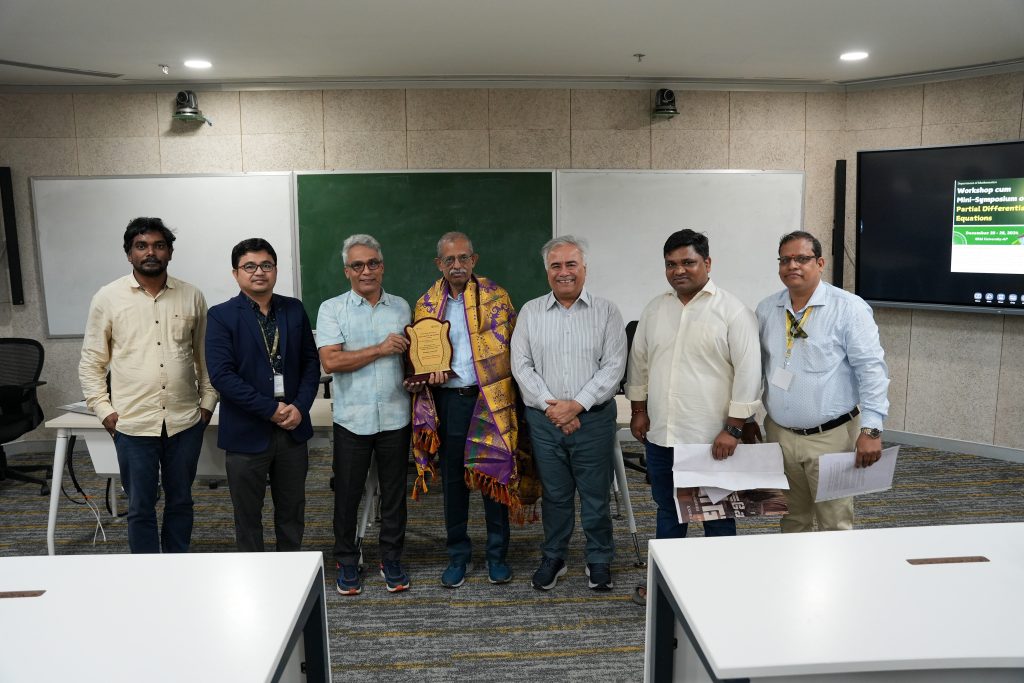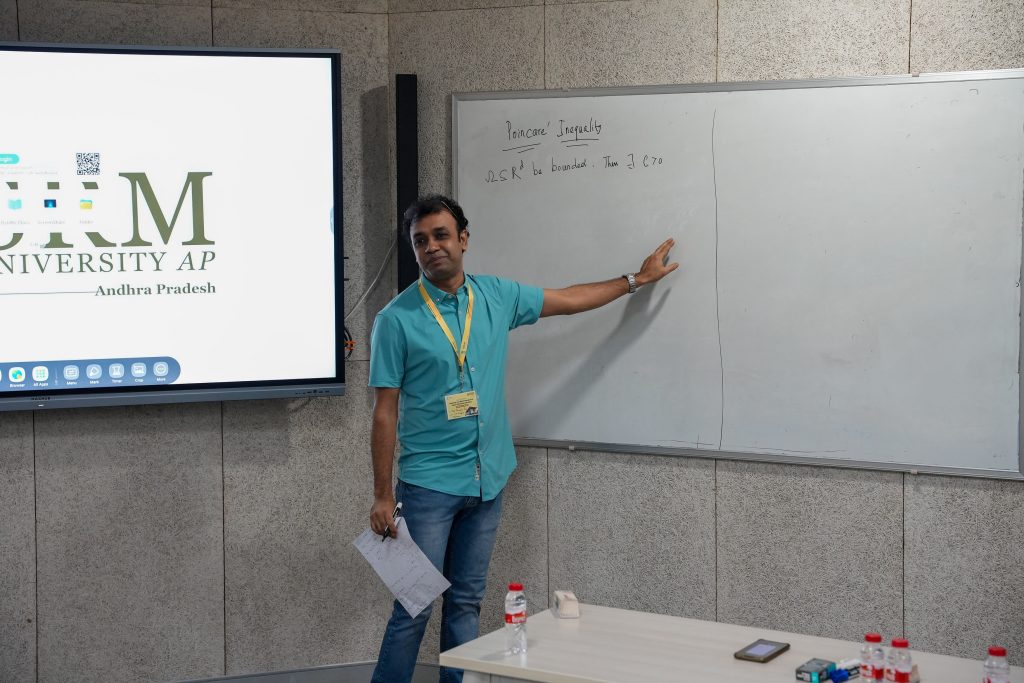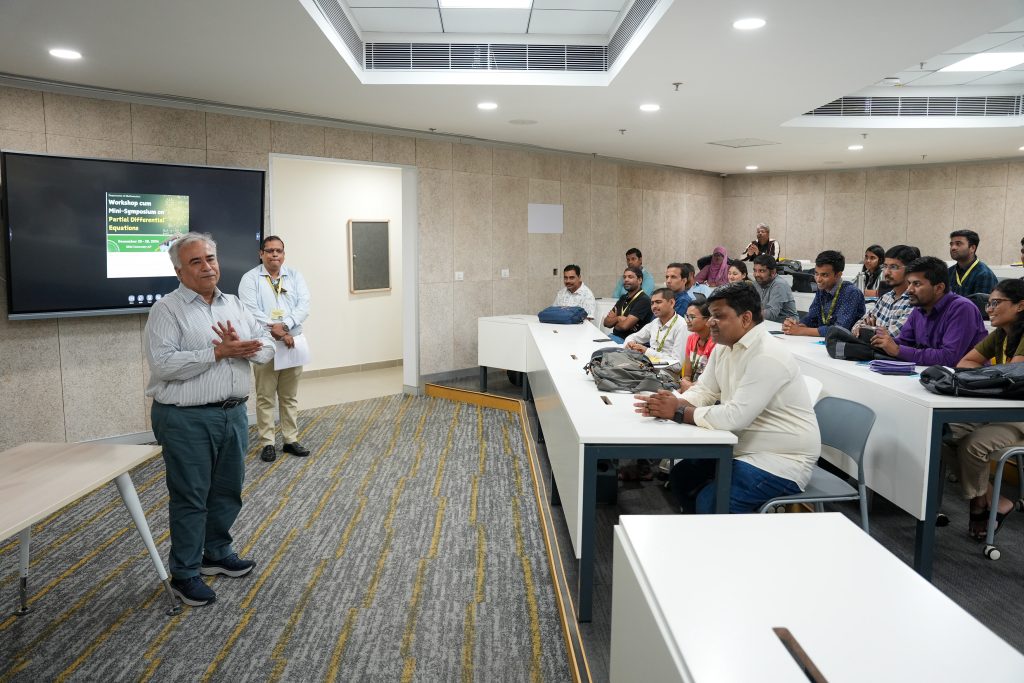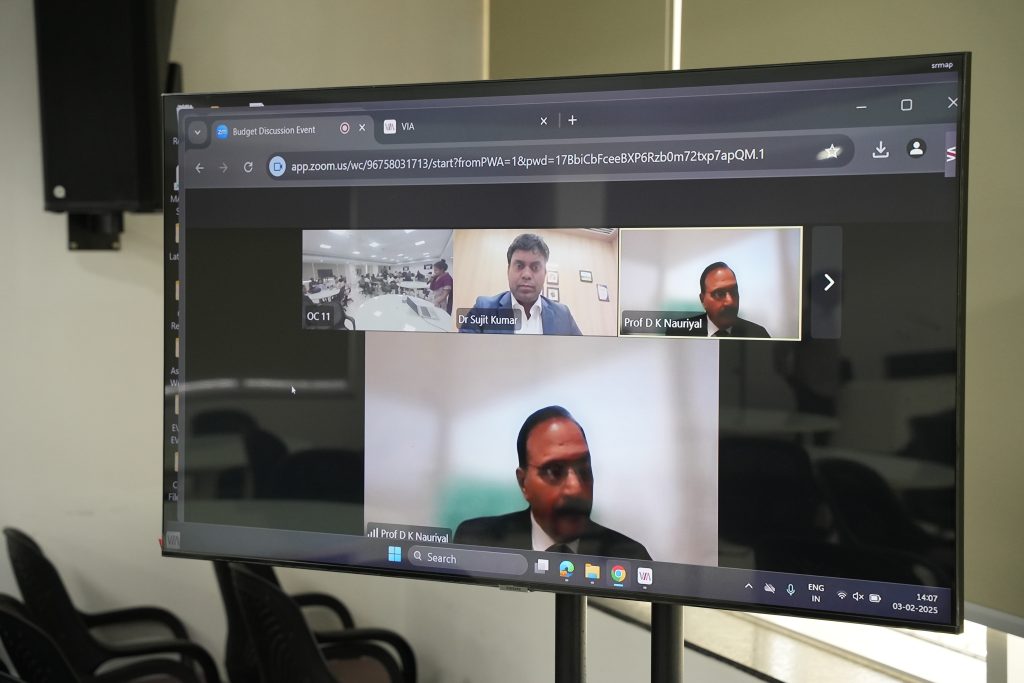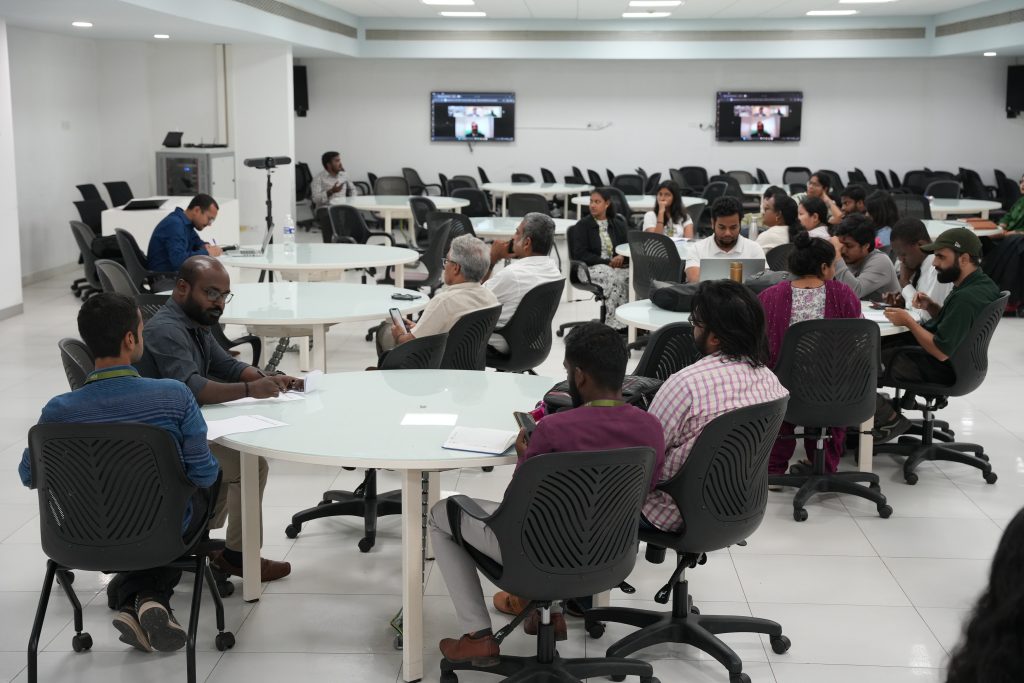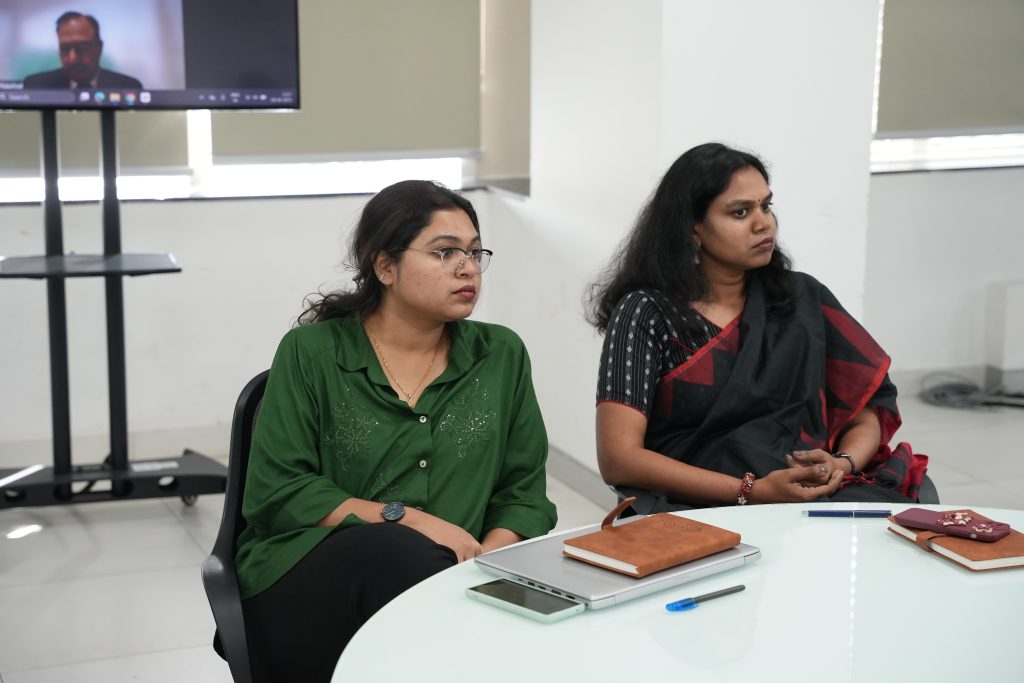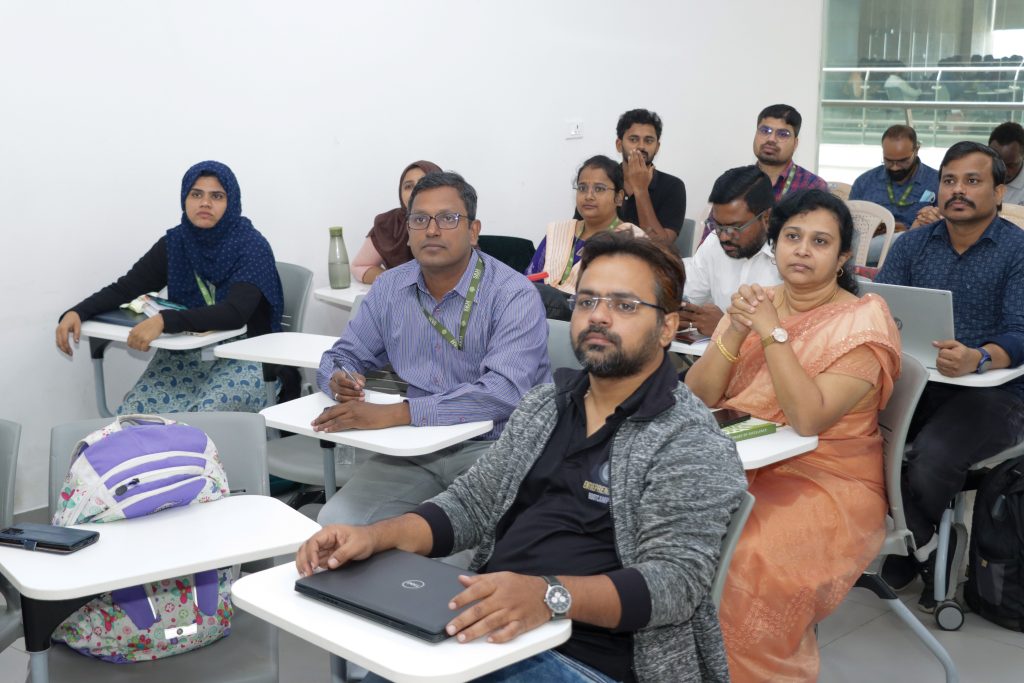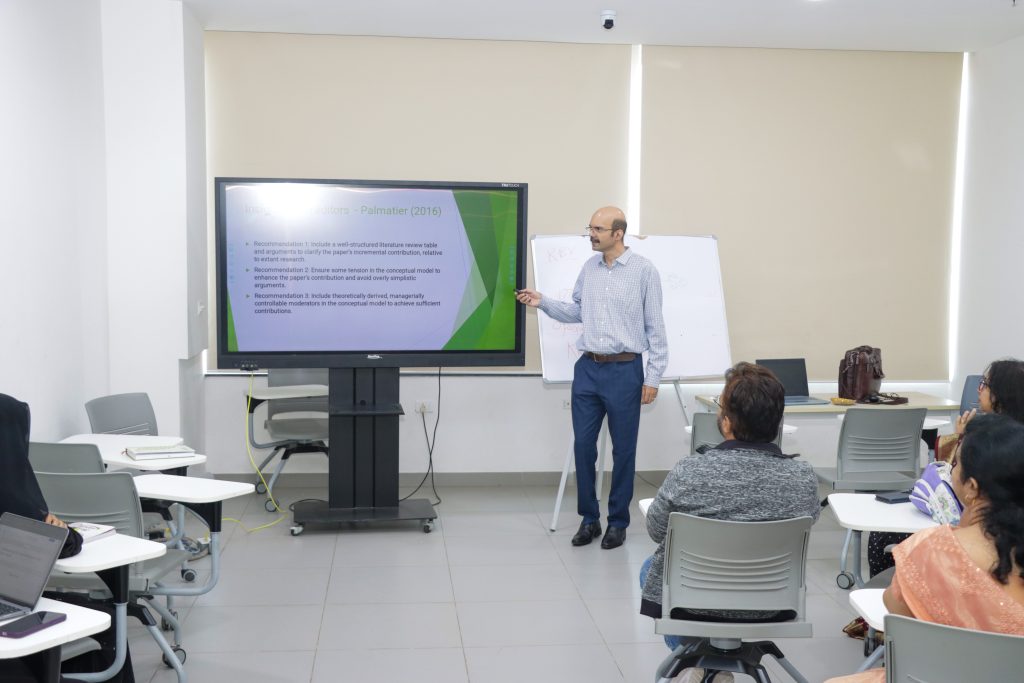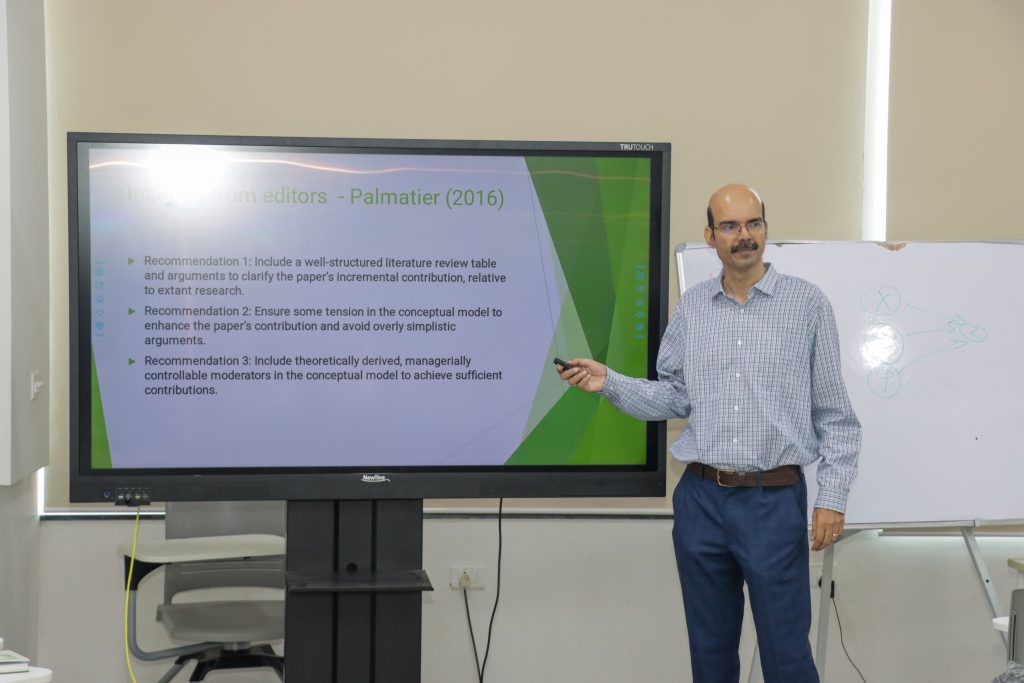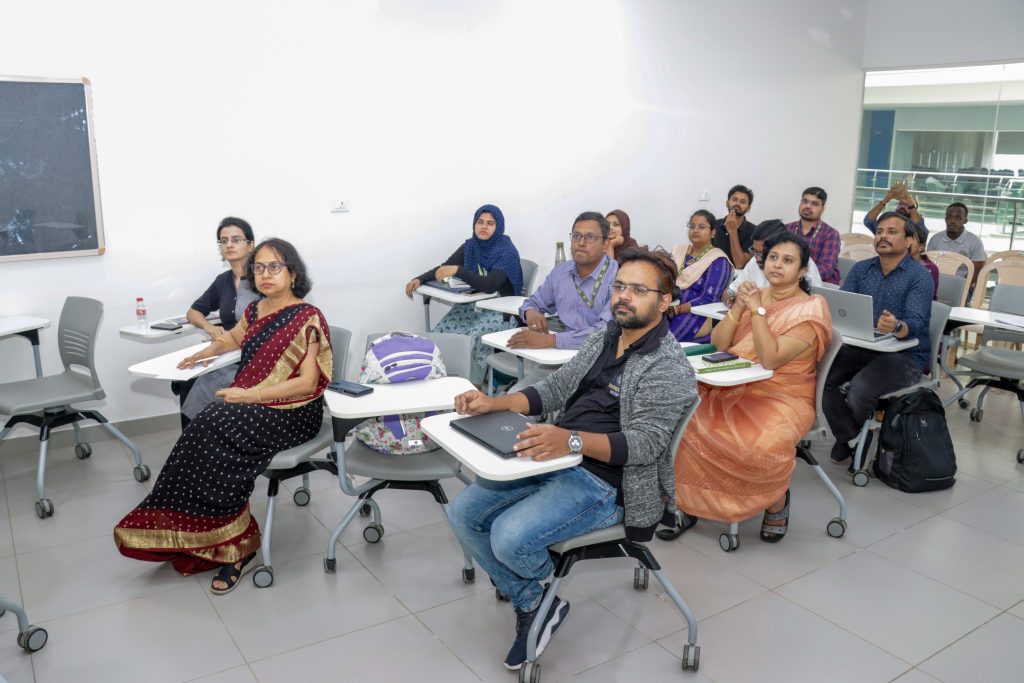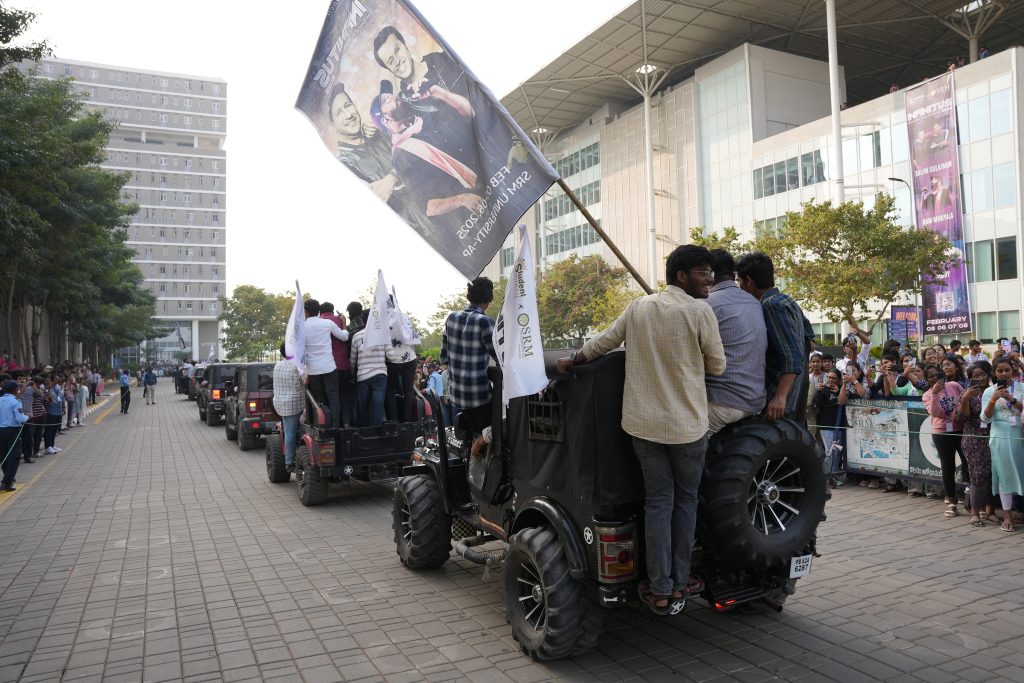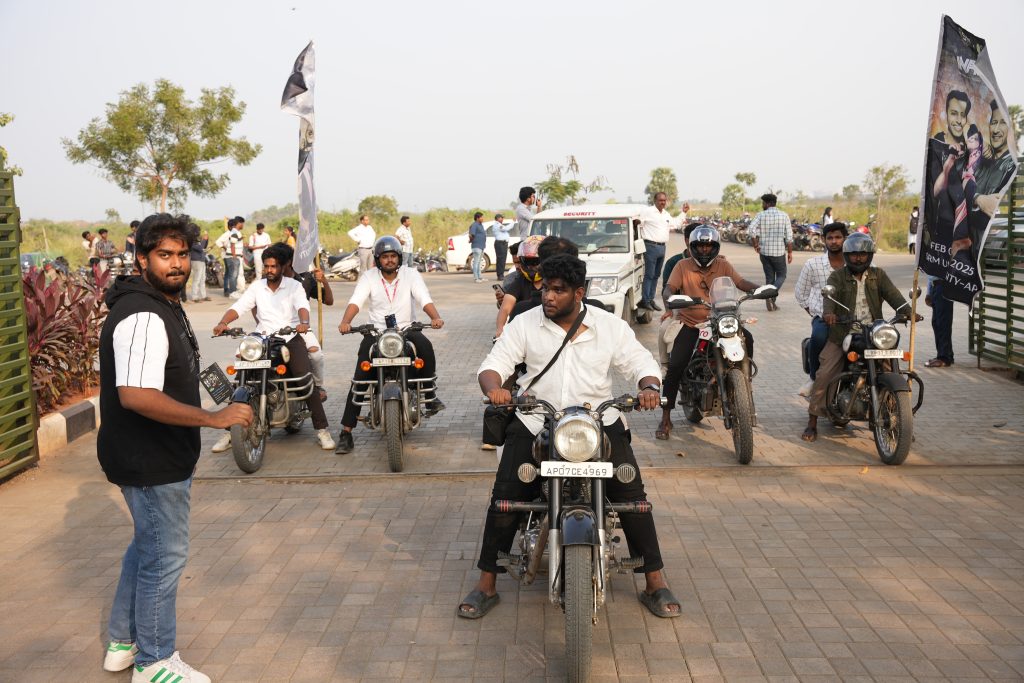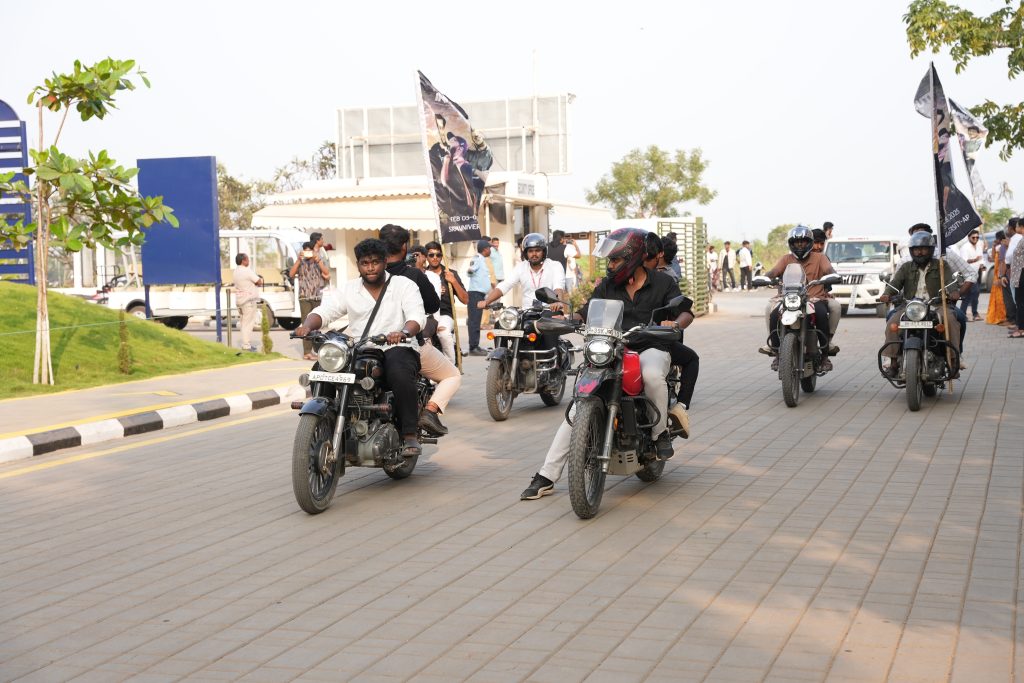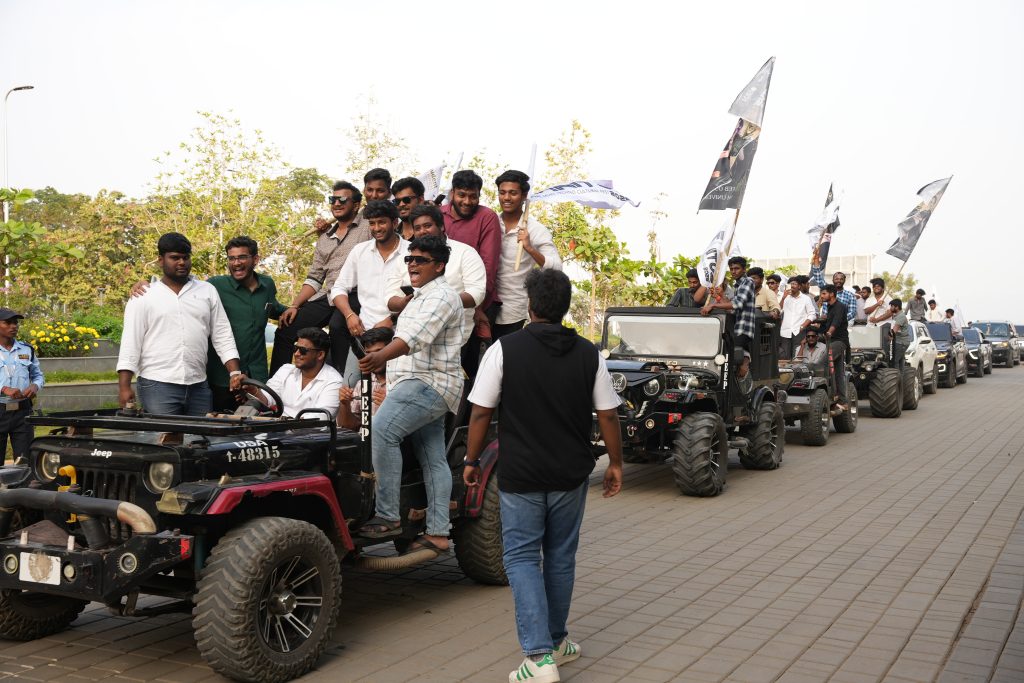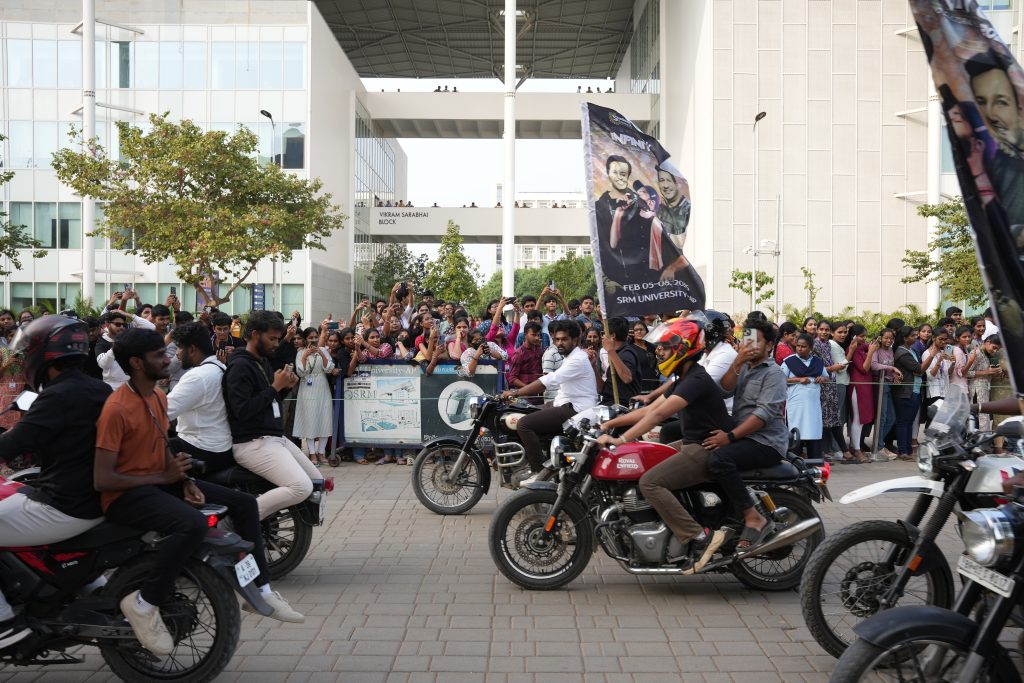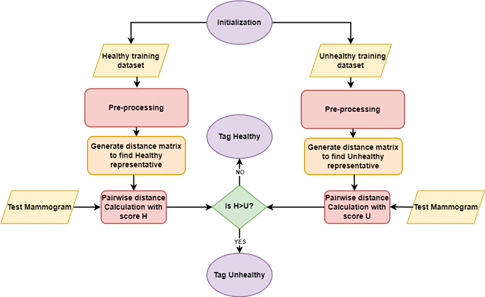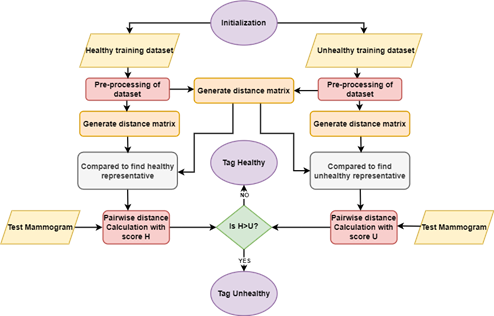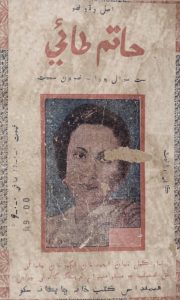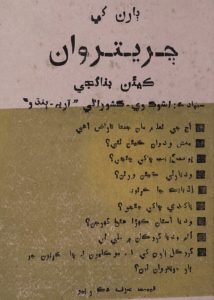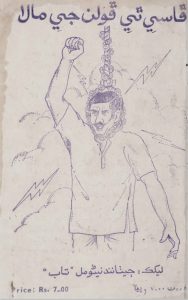Dr Kaur Explores New Frontiers in Mathematics
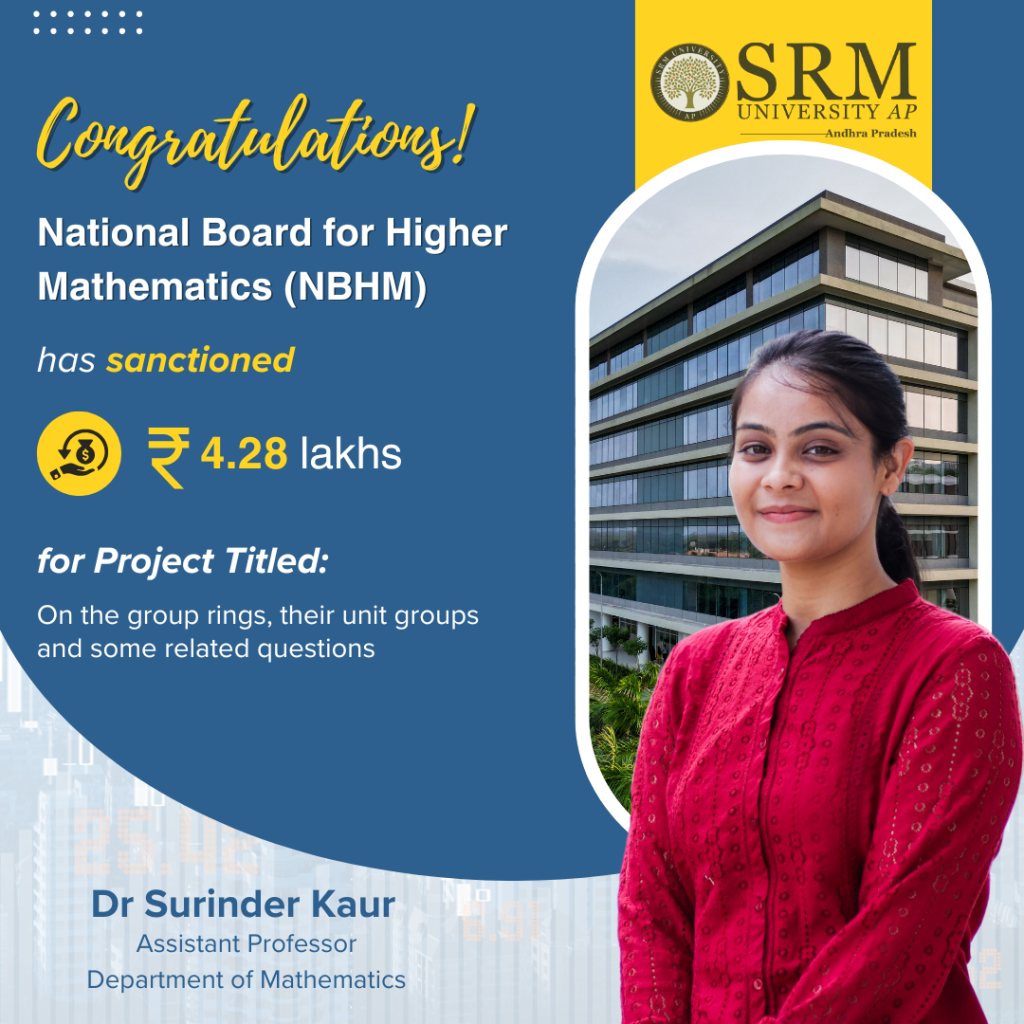 Dr Surinder Kaur, Assistant Professor at the Department of Mathematics is making significant contributions to the mathematical community and SRMAP’s research wing, her research on understanding the group rings and addressing challenges such as the isomorphism problem for group algebra through her project has earned her a funding of ₹ 4.28 lakh from the prestigious National Board for Higher Mathematics (NBHM). Dr Kaur’s impressive research work has become a source of inspiration to many. Given below are some details on her project titled, “On the group rings, their unit groups and some related questions”
Dr Surinder Kaur, Assistant Professor at the Department of Mathematics is making significant contributions to the mathematical community and SRMAP’s research wing, her research on understanding the group rings and addressing challenges such as the isomorphism problem for group algebra through her project has earned her a funding of ₹ 4.28 lakh from the prestigious National Board for Higher Mathematics (NBHM). Dr Kaur’s impressive research work has become a source of inspiration to many. Given below are some details on her project titled, “On the group rings, their unit groups and some related questions”
A Brief Description of the Project
In this project, we aim at obtaining the structure and generators of the unit group of some group rings with a focus on answering the normal complement problem for them. Our further goal is to solve the celebrated isomorphism problem for group algebras of certain classes of groups, especially the twisted version of this problem for group algebras of nilpotency class at least 3. We also plan to look into certain questions in the representation theory of association schemes that are driven by what happens for group algebras.
Explanation of Research Objectives in layperson’s terms
In the last century, the work of E. Noether, F.G. Frobenius and R. Brauer have established that group rings play a central role in the development of representation theory. Further investigations indicated that these objects also have a great influence on the study of other areas of Mathematics like algebraic number theory, algebraic K-theory and algebraic topology. Moreover, the vital role it has played in the recent development of homological algebra and algebraic coding theory is worth acknowledgement.
- Published in Departmental News, Faculty Achievements, Math News, News
6-Day Workshop cum Mini-Symposium on PDE Successfully Concludes
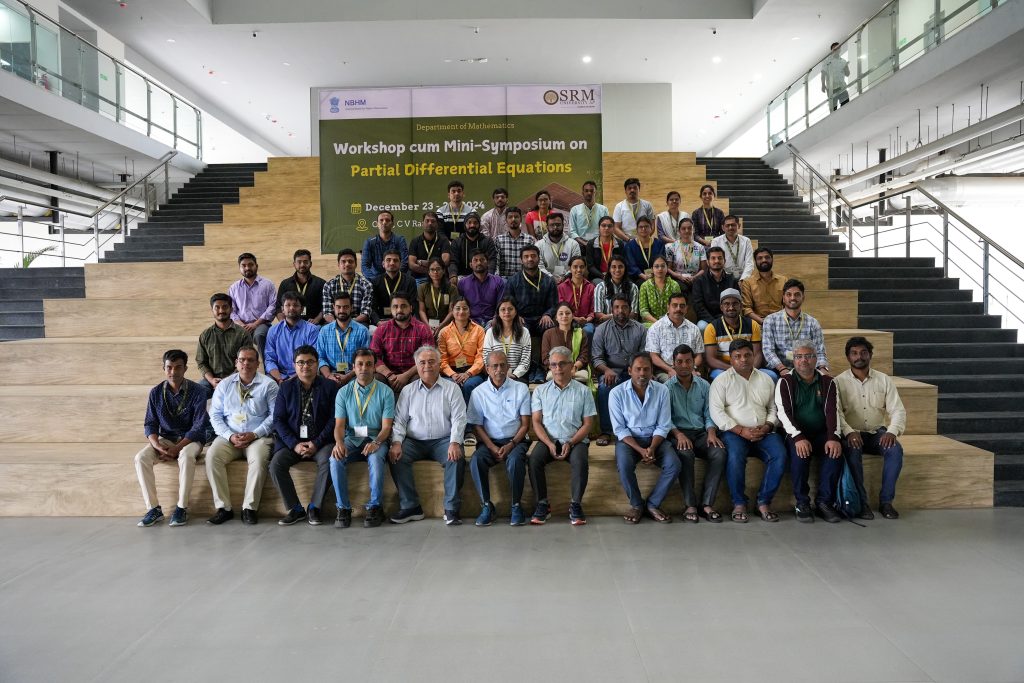
The Department of Mathematics successfully hosted a 6-day Workshop cum Mini-Symposium on Partial Differential Equations (PDE) from December 23 to 28, 2024, with generous financial support from the National Board for Higher Mathematics (NBHM). The event aimed to bridge theoretical foundations and cutting-edge applications of PDEs, fostering academic dialogue among researchers, scholars, and students.
The Workshop held on the theme “Basics of regularity theory of elliptic partial differential equations” featured sessions by subject experts including Prof. A. Adimurthi, Visiting Faculty, Department of Mathematics and Statistics, IIT Kanpur; Dr Karthik Adimurthi, Reader, Tata Institute of Fundamental Research Centre for Applicable Mathematics, Bangalore and Prof. Prosenjit Roy, Professor, Department of Mathematics, IIT Kanpur.
Themed “Applied Mathematics Symposium on Differential Equations: Theory, Computation, and Beyond”, the mini-symposium featured insightful talks by Prof. Mohit Dalwadi, Associate Professor in Applied Mathematics, Mathematical Institute, University of Oxford; Dr Satyajit Pramanik, Assistant Professor, Department of Mathematics, IIT Guwahati and Dr Moitri Sen, Assistant Professor, Department of Mathematics, NIT Patna. These experts delivered lectures on advanced topics, including elliptic PDE theory, computational methods, and interdisciplinary applications.
The primary aim was to provide participants with a comprehensive understanding of the abstract theory of elliptic partial differential equations, emphasising both foundational principles and modern computational techniques. Interactive sessions, problem-solving workshops, and collaborative discussions enriched the learning experience.
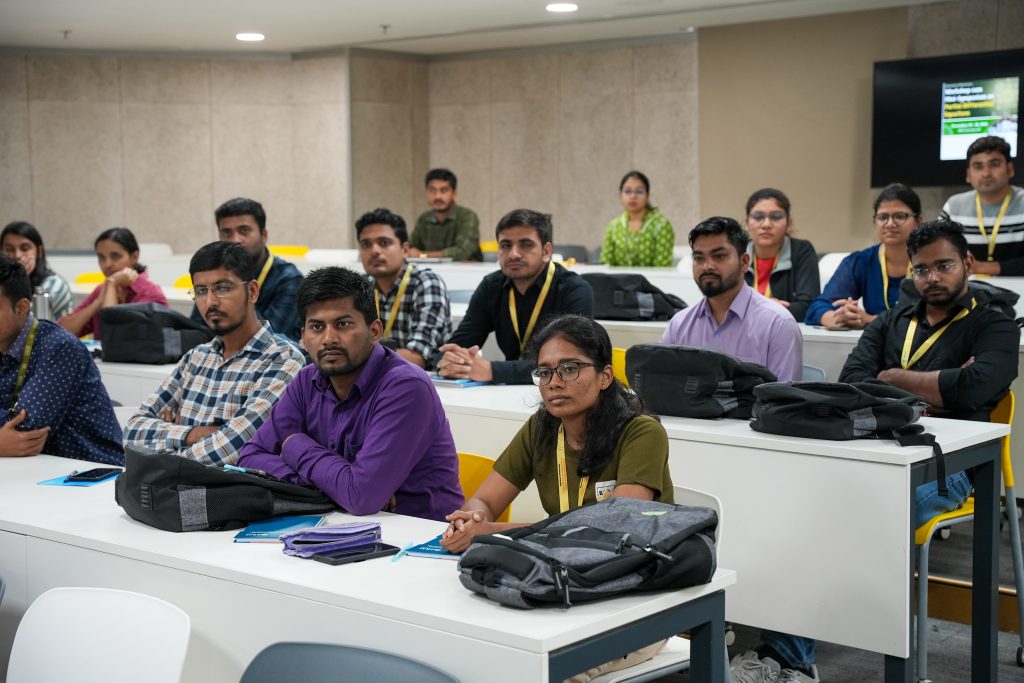
The event witnessed enthusiastic participation from 23 outstation researchers (from reputed institutions across India) and PhD scholars from the Department of Mathematics, SRM AP. The diverse cohort facilitated vibrant academic exchanges and networking opportunities.
A special felicitation ceremony was also held on December 24, 2025, to honour Vigyan Shri Prof. Adimurthi for his monumental contributions to mathematics. This segment underscored SRM AP’s commitment to celebrating excellence in scientific research. The Workshop cum Mini-Symposium served as a dynamic platform for disseminating knowledge, fostering collaborations, and inspiring future research in PDEs.
- Published in Departmental News, Math News, News, Workshop
A Panel Discussion on Decoding the Budget 2025-26
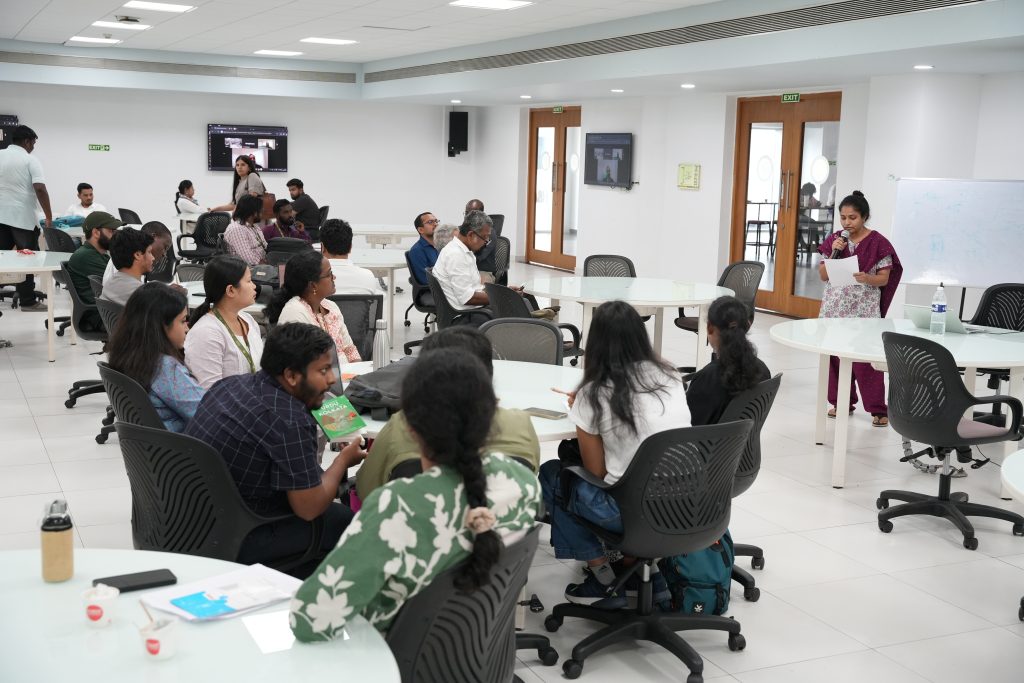
The Department of Economics at Easwari School of Liberal Arts organised a panel discussion titled “Decoding the Budget: Insights, Perspectives, and the Big Picture” on February 03, 2025. The event was designed to provide in-depth insights into the Union Budget 2025-26, focusing on fiscal priorities, economic implications, and sectoral impacts. The discussion brought together distinguished experts from academia and policymaking to analyse key announcements and their long-term effects.
The panel discussion featured three esteemed panellists:
– Prof. Vinish Kathuria (Director, Institute of Development Studies, Jaipur & IIT Bombay) – Expertise: Productivity Measurement, Economics of Regulation, and Environmental Economics.
– Prof. D K Nauriyal (Professor, Department of Humanities and Social Sciences, IIT Roorkee) – Expertise: International Trade, Development Economics, and Economics of Intellectual Property.
– Dr Sujit Kumar (Chief Economist, National Bank for Financing Infrastructure and Development – NaBFID) – Expertise: Banking & Finance, Infrastructure, and the Indian Economy.
The experts analysed the macroeconomic factors influencing the budget, such as inflation control, fiscal deficit management, and global economic trends. The panellists discussed the implications of the budget on critical sectors, including infrastructure, banking, environmental sustainability, and trade policies. The discussion highlighted significant policy changes to boost economic growth and social welfare initiatives. The Q&A session allowed participants to seek clarifications and gain deeper insights into budget-related policies and their long-term effects.
Students, faculty, scholars, and individuals interested in economic policy and financial analysis participate in the discussion. Participants also joined online as the event was in the hybrid mode.
The panel discussion on Decoding the Budget 2025-26 successfully gave attendees a clearer understanding of India’s financial and economic direction. The expert insights helped bridge the gap between budgetary announcements and their practical implications. Students, faculty, and policymakers benefited from the interactive discourse, enhancing their knowledge of economic policies and fiscal governance.
This insightful session emphasised the importance of informed economic discussions in shaping perspectives on national financial policies and governance strategies.
- Published in Departmental News, Economics Current Happenings, Economics News, News
Enabling Research Excellence: Paari School of Business organises Five-Day FDP
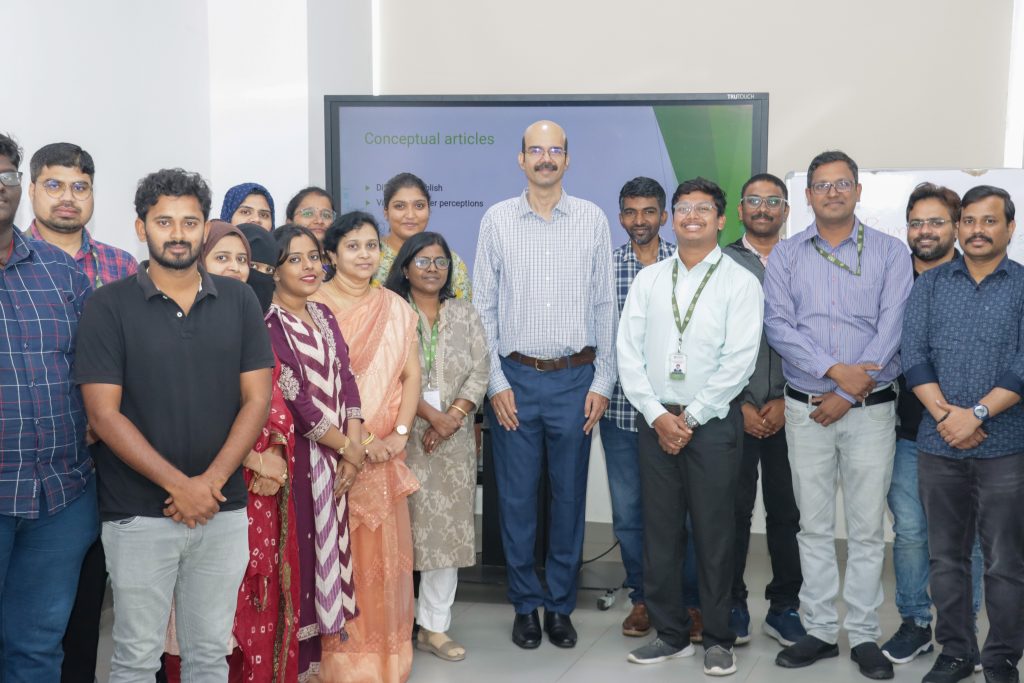 Research is essential for academics in today’s dynamic environment and SRMAP sincerely believes in the idea that research is the foundation to innovation and progress. The Department of Management at Paari School of Business organised a 5-day International Faculty Development Programme (FDP) in hybrid mode, focusing on the “Art of Writing High-Quality Research Articles in Management.” Resource persons, Prof. Piyush Sharma, Prof. Tak Yan Leung, Dr Kishore Gopalakrishna Pillai, and Dr Vimal Babu, provided participants with valuable insights into advanced research methodologies and effective academic writing strategies.
Research is essential for academics in today’s dynamic environment and SRMAP sincerely believes in the idea that research is the foundation to innovation and progress. The Department of Management at Paari School of Business organised a 5-day International Faculty Development Programme (FDP) in hybrid mode, focusing on the “Art of Writing High-Quality Research Articles in Management.” Resource persons, Prof. Piyush Sharma, Prof. Tak Yan Leung, Dr Kishore Gopalakrishna Pillai, and Dr Vimal Babu, provided participants with valuable insights into advanced research methodologies and effective academic writing strategies.
The FDP aimed to deliver a comprehensive understanding of the essential components of academic research and publication, equipping attendees with the skills required to craft well-structured, high-impact research articles. The topics discussed during the five-day programme were particularly relevant and contemporary. Moreover, the resource persons encouraged the participants to enhance their research output, improve the likelihood of the participant’s publication in reputable journals, and contribute meaningfully to the academic community. The FDP sought to bridge the gap between research conceptualisation and publication, enabling faculty members to become more proficient and impactful researchers.
Participants greatly benefitted from the combined expertise and experience of these distinguished scholars, fostering a deeper understanding of high-quality research practices.
- Published in Departmental News, News, Paari Current Happenings
INFINITUS’25 Flagged-off
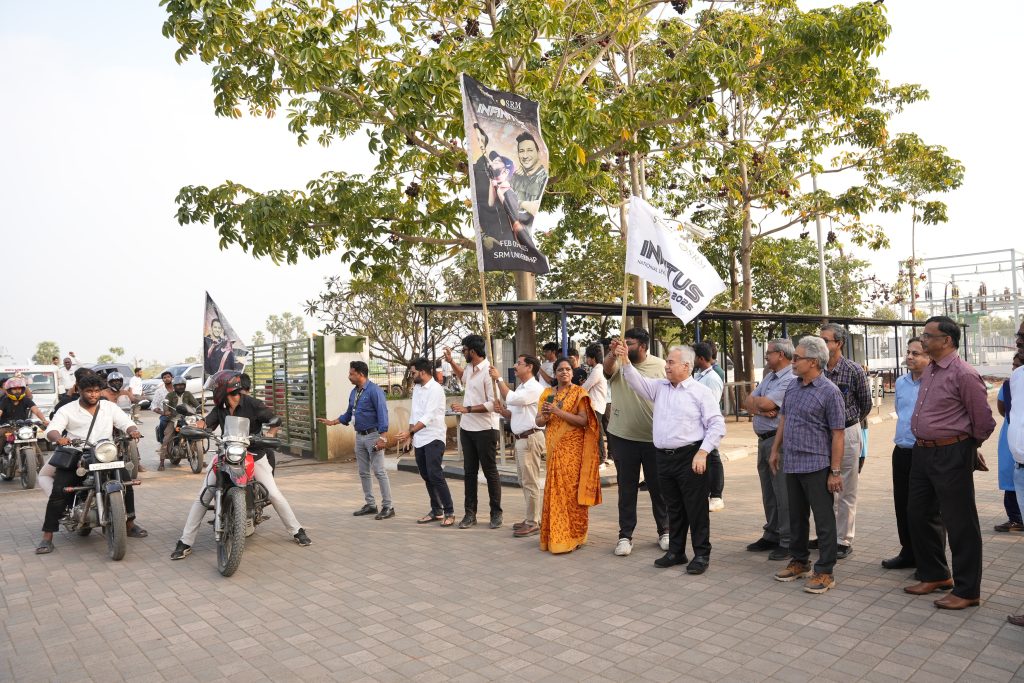 SRM University-AP is set to host the most anticipated event of the year, INFINITUS’25, from February 05 to 08. The annual-fest, a celebration of innovation, art, and talent, will transform the campus into a vibrant hub of exhilarating activities and competitions and an entertainment haven.
SRM University-AP is set to host the most anticipated event of the year, INFINITUS’25, from February 05 to 08. The annual-fest, a celebration of innovation, art, and talent, will transform the campus into a vibrant hub of exhilarating activities and competitions and an entertainment haven.
The annual-fest was flagged-off by Vice Chancellor, Prof. Manoj K Arora in the presence of Registrar, Dr R Premkumar; Deans of the three schools, Director-Student Affairs, Mr Anil Kumar Nigam; Director- Communications, Mr Pankaj Belwariar; Associate Director- Student Affairs, Ms Revathi Balakrishnan and Student Council President, Mr BVS Lakshman among others. The flag-off was followed by an exciting car rally that saw a fleet of cars, offering a glimpse of the festivities that will follow.
INFINITUS ’25 will commence with HACKSRM, a 22-hour non-stop hackathon followed by an array of technical, non-technical and cultural competitions. Some of the events to look forward to are FIFA Face-off, Road to Valor, BGMI Squad Tournament (Technical Competitions) Chronicles of Crime, Anime Jeopardy, IPL auction (Non-Technical Competitions) The Glitch Stage , Tech Tales, Cyber Vogue (Cultural Competitions) to name a few.
Apart from a multitude of competitions and gaming tournaments participants will also enjoy a platform to demonstrate their skills and creativity allowing a diverse array of talents to shine. INFINITUS ‘25 will showcase a variety of performances and cultural extravaganzas. Attendees can look forward to captivating musical acts from bollywood music-composer duo Salim and Sulaiman. The fest will feature talented individuals and groups displaying their artistic flair, culminating in a series of high-energy pro shows guaranteed to leave audiences in awe.
- Published in News, student affairs news
Patent on Controlling DC-DC Buck Power Converters
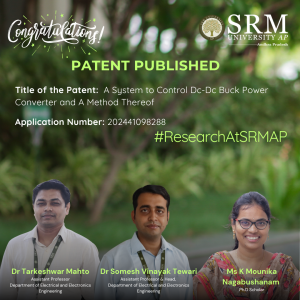 The patent titled “A System to Control Dc-Dc Buck Power Converter And A Method Thereof” by research scholar K Mounika Nagabushanam, and Assistant Professors, Dr Somesh Vinayak Tewari, and Dr Tarkeshwar Mahto with application no: 202441098288 presents an innovative approach to managing power conversion in renewable energy systems extending its applications in electric vehicles and microgrids, highlighting the importance of robust power control in advancing sustainable energy technologies.
The patent titled “A System to Control Dc-Dc Buck Power Converter And A Method Thereof” by research scholar K Mounika Nagabushanam, and Assistant Professors, Dr Somesh Vinayak Tewari, and Dr Tarkeshwar Mahto with application no: 202441098288 presents an innovative approach to managing power conversion in renewable energy systems extending its applications in electric vehicles and microgrids, highlighting the importance of robust power control in advancing sustainable energy technologies.
Abstract
The work disclosed a system to control DC-DC buck power converter and a method thereof. The system comprises a photovoltaic (PV) panel, a first DC-DC buck converter for voltage step-down, and a battery for energy storage. A bidirectional DC-DC converter manages power flow between the battery and the source bus, while a second bidirectional converter exchanges power with the AC grid. The load bus integrates a second DC-DC buck converter to regulate power for constant power loads and resistive loads. Switching components like IGBTs controlled through PWM signals, ensure precise power control. Inductive and capacitive elements stabilize voltage, filter ripples, and reduce noise. The system supports adaptive power distribution and robust load handling, ensuring efficient energy management.
Explanation in layperson’s terms
Passivity-based control (PBC) is a control technique applied to buck converters within renewable energy systems to maintain stability and efficiency despite varying input conditions. Buck converters are essential for stepping down fluctuating voltage outputs from renewable sources, such as solar panels, to a consistent level suitable for storage or direct use. In solar power systems, PBC is used to manage the voltage conversion from solar panels to batteries or the grid. It stabilizes the voltage output, ensuring efficient battery charging and smooth integration with the electrical grid. PBC’s application in renewable energy systems demonstrates its critical role in advancing sustainable energy technologies, providing a reliable and efficient power supply.
Practical and Social Implications
The proposed control can be used in Electric Vehicle, Microgrid applications to stabilize voltage under load variations.
Future research plans
Future research plan is to work on the testing of proposed control with high level DC-DC converters
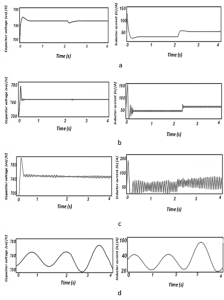
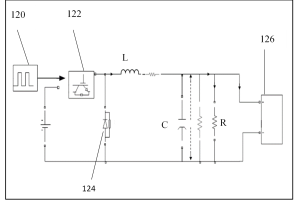
- Published in Departmental News, EEE NEWS, News, Research News
Book Chapter on Wastewater Treatment and Energy Production
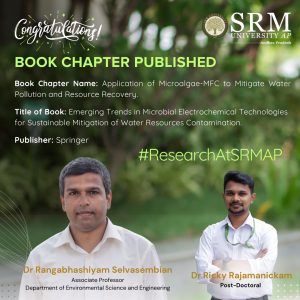 In an era where sustainable energy and environmental conservation are paramount, integration of Microalgae with Microbial Fuel Cells for Wastewater Treatment and Energy Generation emerges as a groundbreaking contribution to biotechnology. The book chapter, “Application of Microalgae-MFC to Mitigate Water Pollution and Resource Recovery” authored by Post-doctoral Research Scholar, Dr Ricky Rajamanickam under the guidance of Associate Professor and Head of the Department of Environmental Science and Engineering, Dr Rangabhashiyam Selvasembian explores the revolutionary potential of microalgae-driven microbial fuel cells (MFCs) in tackling wastewater pollution while generating renewable energy. This work—featured in the book titled, Emerging Trends in Microbial Electrochemical Technologies for Sustainable Mitigation of Water Resources Contamination brings together leading experts offering invaluable insights for scientists, engineers, and policymakers striving for a cleaner and greener future.
In an era where sustainable energy and environmental conservation are paramount, integration of Microalgae with Microbial Fuel Cells for Wastewater Treatment and Energy Generation emerges as a groundbreaking contribution to biotechnology. The book chapter, “Application of Microalgae-MFC to Mitigate Water Pollution and Resource Recovery” authored by Post-doctoral Research Scholar, Dr Ricky Rajamanickam under the guidance of Associate Professor and Head of the Department of Environmental Science and Engineering, Dr Rangabhashiyam Selvasembian explores the revolutionary potential of microalgae-driven microbial fuel cells (MFCs) in tackling wastewater pollution while generating renewable energy. This work—featured in the book titled, Emerging Trends in Microbial Electrochemical Technologies for Sustainable Mitigation of Water Resources Contamination brings together leading experts offering invaluable insights for scientists, engineers, and policymakers striving for a cleaner and greener future.
Brief Introduction to the Book Chapter
The chapter explores the integration of microalgae with microbial fuel cells (MFCs) for simultaneous wastewater treatment and energy generation. It delves into the mechanisms of microalgae-based MFCs, focusing on electricity generation, carbon capture, and the production of value-added bioproducts. The work highlights this technology’s potential for addressing water pollution and resource depletion while advancing sustainable energy solutions.
Significance of the Book Chapter
This chapter is significant as it addresses pressing global challenges such as water pollution, resource depletion, and the need for sustainable energy solutions. It aligns with the Sustainable Development Goals and contributes to advancing integrated biotechnological solutions for environmental and energy challenges.
Target Audience
The book chapter targets environmental scientists, engineers, policy makers, and researchers working in biotechnology, wastewater management, and renewable energy. It is also resourceful for students and professionals interested in sustainable development and innovative biotechnologies.
Co-Authors or Major Contributors
Dr Ricky – (First author) (Postdoc)
Dr Rangabhashiyam Selvasembian (Corresponding author) (Associate Professor)
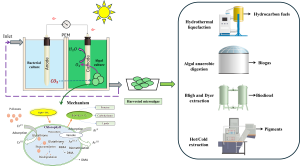
- Published in Departmental News, ENVS News, News, Research News
Synthesising Flexible Solid-state Electrolytes for Electronic Devices
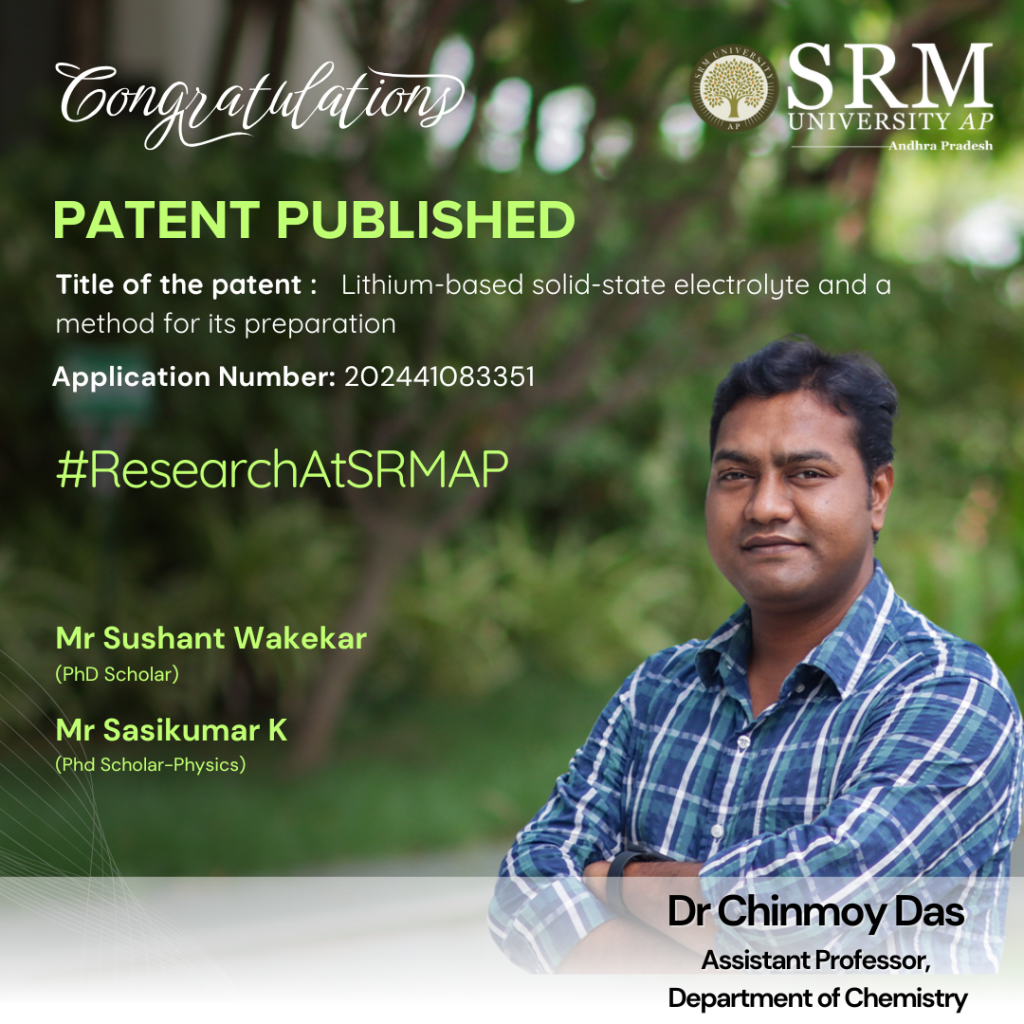
Dr Chinmoy Das, Assistant Professor from the Department of Chemistry, and scholars Mr Sushant Wakekar and Mr Sasikumar K have published their invention titled “Li-based solid-state electrolyte and a method for its preparation” in the Indian Patent Office (Patent application No. 202441083351). The invention illustrates how to synthesise inexpensive Li(I) ion-based solid-state electrolytes that are feasible for fabricating flexible electronic devices. The team worked on inexpensive and readily available starting materials that provide self-supported and flexible solid-state electrolytes to advance LIB applications.
Abstract
In our invention, we described a rapid and robust synthetic methodology to prepare novel flexible solid-state electrolytes (SSEs) suitable for the fabrication of eco-friendly lithium-ion batteries (LIBs). The mechanically flexible film has been synthesized upon in situ incorporation of Li(I) ion into two inexpensive biocompatible polysaccharide matrices through mixing. We achieved Li(I) ion-based superionic conductivity at room temperature which is feasible for the fabrication of flexible electronics in modern age society.
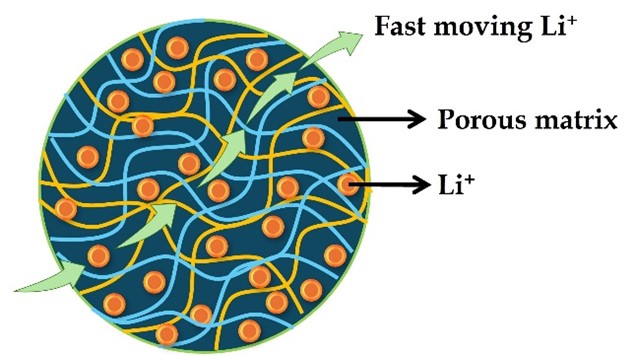
Practical Implementation/Social Implications of the Research
This invention can be implemented in various industries, such as electric vehicles (EVs), wearable and flexible electronics, and aerospace and aviation.
The team is extending their research towards the fabrication of cheaper sodium (Na+), potassium (K+)-ion based solid-state electrolytes with superionic conductivity and implementing them in designing the biodegradable sodium-ion / potassium ion batteries (NIBs / KIBs).
- Published in Chemistry-news, Departmental News, News, Research News
A Novel System for Breast Cancer Diagnosis
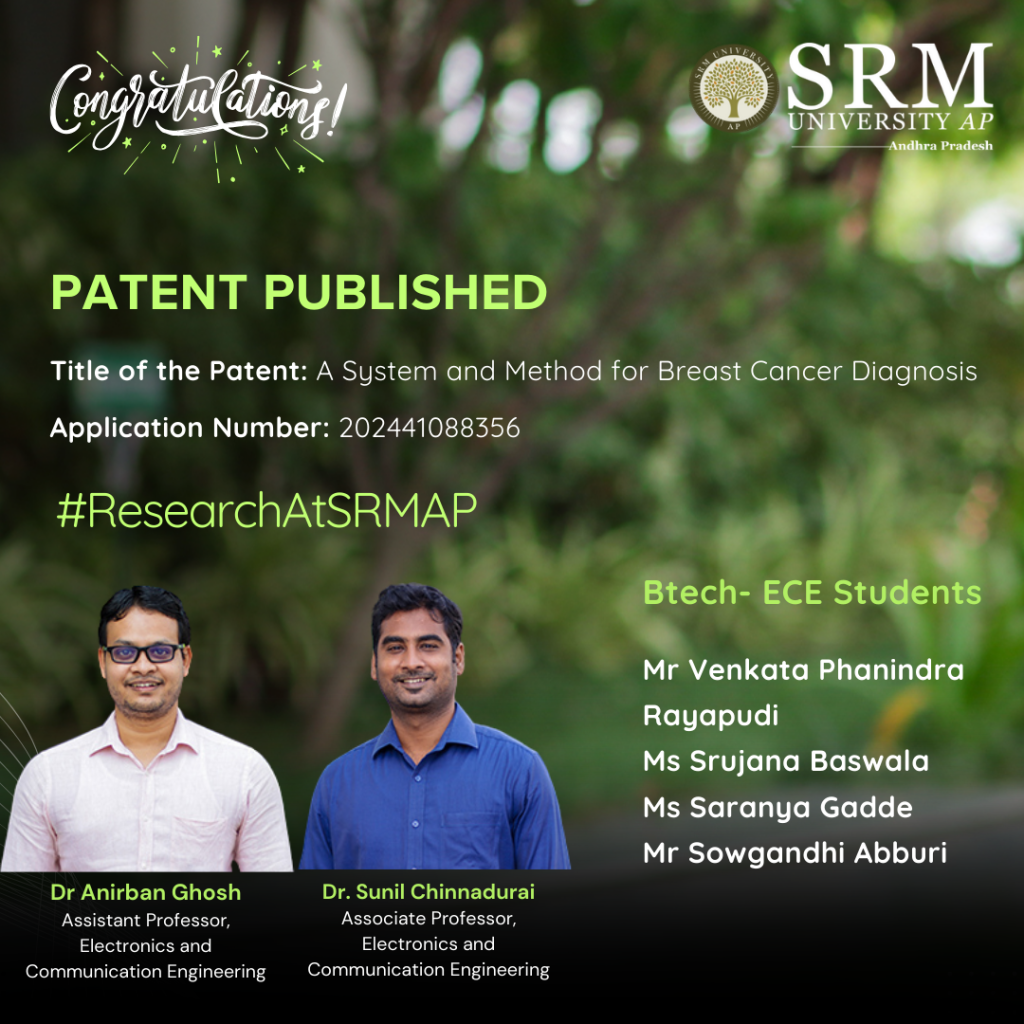
Faculty duo from the Department of Electronics and Communication Engineering, Dr Anirban Ghosh and Dr Sunil Chinnadurai, along with their research cohort, Phanindra Rayapudi Venkata, Baswala Srujana, Gadde Saranya, and Abburi Sowgandhi (B.Tech. ECE students) have published their patent titled “A System and Method for Breast Cancer Diagnosis” (Application number: 202441088356). Their cutting-edge research presents a system to help diagnose breast cancer more accurately and efficiently using advanced image analysis techniques.
Abstract
The present disclosure discloses a system for diagnosing breast cancer that utilizes topological data analysis to transform mammogram images into meaningful diagnostic insights. It includes a data preprocessing module for image standardization and enhancement and a feature extraction module to create histograms for topological analysis. The topological data analysis module converts these histograms into Persistent Homology Diagrams (PHDs) representing topological features. An Earth Mover’s Distance (EMD) matrix is generated by a similarity metric module to compare PHDs. Representative PHDs are identified using a representative selection module, enabling accurate classification by the classification module. The system’s performance is assessed through various metrics by a performance analysis module, and a web service module provides an intuitive interface for users to upload images and receive diagnostic results. This approach enhances breast cancer detection by focusing on persistent topological features, offering improved precision and interpretability.

Figure 1. Conversion of mammograms into PHDs
Explanation of the Research in Layperson’s Terms
Here’s how the system works in simple terms:
1. Preparing the Images: Mammogram images are cleaned and adjusted to ensure they’re clear and easy to analyse. The focus is on areas that might show signs of cancer.
2. Extracting Patterns: The system looks for patterns in the images that could indicate healthy or unhealthy tissue. It turns these patterns into a visual map that represents the shape and structure of the tissue.
3. Analysing Shapes: The system uses math to study how these shapes appear and disappear as the image details change. The most persistent shapes (important ones) are kept, and random noise is ignored.
4. Comparing Images: A tool measures how similar or different these patterns are between images. This helps the system group them into healthy or cancerous categories.
5. Making a Decision: The system compares a new mammogram to its library of known patterns to decide whether it’s likely healthy or shows signs of cancer.
6. Easy to Use: Doctors can upload an image to a web-based tool and quickly get results, complete with visual explanations.
This system helps doctors by making the diagnosis process faster, more reliable, and easier to understand, which can lead to earlier and better treatment for breast cancer.
Practical Implementation/Social Implications of the Research
This research enhances breast cancer detection by enabling earlier, more accurate diagnoses and improving survival rates. Its web-based tool ensures access to advanced diagnostics in remote and underserved areas, reducing disparities in healthcare. Supporting radiologists with objective insights minimizes errors and workload, especially in resource-limited settings. Patients benefit from faster, clearer results, leading to timely and cost-effective treatment. Additionally, the innovative methods could inspire advancements in diagnosing other diseases, driving broader medical progress and improving global health outcomes.
Future Research Plans
Future research could expand this system to detect other diseases like lung or liver cancer, improve diagnostic accuracy by reducing false results, and integrate multimodal data for comprehensive analysis. Incorporating patient-specific information for personalized risk assessments, creating self-learning models, and optimizing computational efficiency could enhance its adaptability. Large-scale global trials and user-friendly interfaces would ensure effective implementation across diverse populations and healthcare systems, making the technology more versatile, accessible, and impactful.
- Published in Departmental News, ECE NEWS, News, Research News
The Anxiety of Indianness in the Making of Sindhi Literature
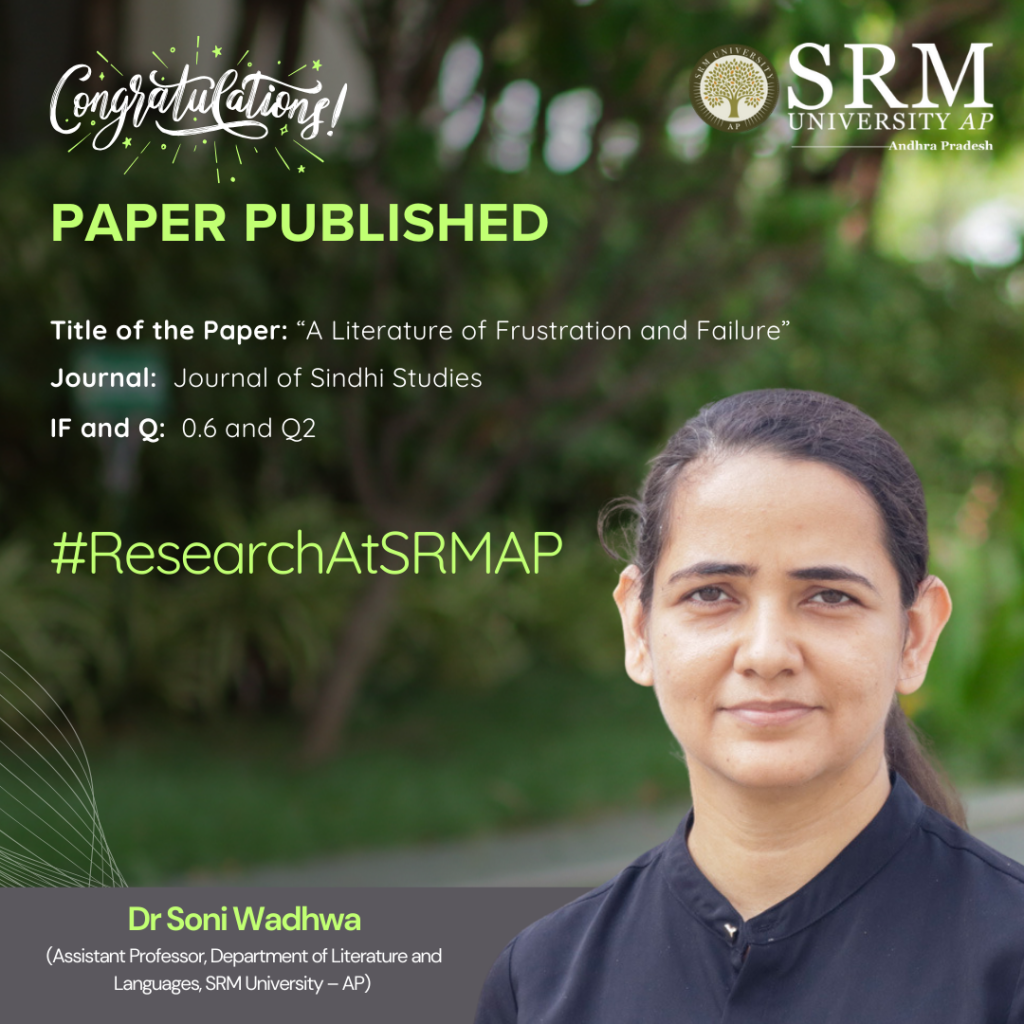
Very often, it is assumed that the “vernacular” language texts in India do not undergo any anxiety of proving themselves Indian while works written in English do. In her research paper, “A Literature of Frustration and Failure”: The Anxiety of Indianness in the Making of Sindhi Literature as an Indian Literature”, published in the esteemed Q2 journal Journal of Sindhi Studies, Dr Soni Wadhwa, Assistant Professor, Department of Literature and Languages, focuses on Sindhi post literary activity that unfolded in the first 20 years after independence to show that Sindhi has a history of going through anxiety of belonging in India.
Abstract
Studies of Partition frequently turn to literature to understand how displacement processes, among other things, impact aesthetics and representation. The article takes a broader view of aesthetics as representation: it demonstrates how turning to the literary archive of a moment and a community gives rise to questions about the politics of individual texts and literary historiography. Centred on Sindhi literature produced in India after Partition, it shows that examining the literary productivity of the community needs to involve questions of literature as political survival. It focuses on the earliest essays from the Sindhi literary scene in India (published in the Sahitya Akademi journal Indian Literature). The article argues that these essays register anxiety about the survival of a language trying to come into being in an already existing and complicated language-nation relationship. It unpacks three registers of anxiety visible in the literary archive to broaden the scope of the conversations around the Sindhi language and its literature.
This research has been conducted to advance interest in and conversations around Sindhi literature in India. Since Sindhi does not have a state in India, most people are not aware that it exists as a language and that it has a rich literary tradition.
After this article, Dr Soni Wadhwa intends to explore different writers, themes, and movements in Sindhi literature.
Collaborations
The research has been funded by George Mason University.
- Published in Departmental News, English Current Happenings, English news, News, Research News


